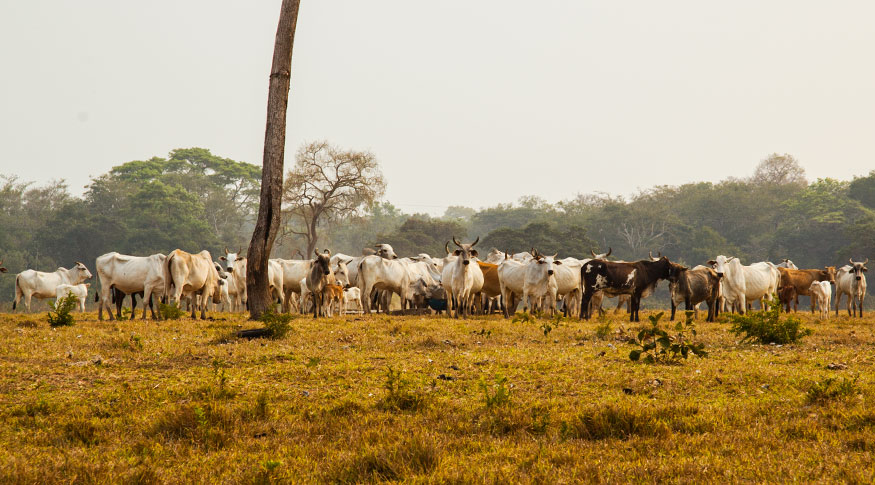Municipal Livestock Survey
Cattle herd is smaller in 2018, a year marked by growth in slaughter and exports
September 20, 2019 10h00 AM | Last Updated: September 23, 2019 04h34 PM

All the animal inventories recorded increases in 2018, except cattle herd, which fell by 0.7%, with a reduction by approximately 1.5 million head 1,5 agaisnt 2017 figures. That is the second decrease in a row after a record level reached in 2016. In spite of that, the country has the biggest inventories, with about 213.5 million. Mato Grosso accoingted for 14.1% of the national output, but the biggest inventory was found in São Félix do Xingu, in Pará.
These data come from the Municipal Livestock Survey (PPM), released today by the IBGE. The growth of slaughter and the record exports of beef, in 2018, contributed to the reductiom of cattle inventories, observed in the South (-3.3%), Southeast (-1.2%) and Central West (-0.4%). Cattle inventories increased by 0.2% in the North and Northeast.
According to the manager of the survey, Angela Lordão, the reduction in cattle herd may be influenced by the increase of the slaughter of breeders in the last few years.
“Beef cattle has faced cycles of ups and downs. So, in some years, mainly due to the price of calves and the price of one arroba, more female cattle has been discarded. That took place in 2006 and 2007, and then after 2012. Now we see a new downward cycle that started in 2017.", he said.
Cattle herd in São Félix do Xingu, in the last 10 years, was 18%, and in 2018 herd amounted to 2.3 million head. The second and third biggest inventories were found in the municipalities of Corumbá and Ribas do Rio Pardo, both in Mato Grosso do Sul. In terms of ral increase between 2008 and 2018, the highlights were two municipalities in the state of Paraná: Novo Repartimento (142.3%) and Marabá (102.7%).
The survey analyst Mariana Oliveira highlighted that the Central West has led, since 1981, the production of cattle, once the region has been bioclimatically favorable and also due to economic matters, such as logistics and flowing of goods.
“For the niche of cattle herd, which demands space, logistics and flowing, the Central West and North Regions have the makings for that type of production, and that accounts the increase. The North and the Central West have had similar increases, but the North starte with much smaller inventories ”.
Output of milk surpasses two thousand liters and output of eggs hits record figure
The survey also shows that the output of milk increased once more - 1.6% after a decrease of 1.1% in 2017 – and reached 33.8 billion liters with a production value of R$ 39.3 billion. the national output of milk exceeded two thousand liters per cow a year. The South Region remained in the leadership of national production, with 3,437 liters per cow a year.
The production of hen eggs reached 4.4 billion dozens, the highest level ever, resulting in a revenue of R$ 14 billion. The state of São Paulo was the main national producer, and accounted for 25.6% of the total.
Another item surveyed was fish farming, which reached 519.3 thousand metric tons in 2018, with an increase of 3.44% against the previous year, and generated a value of production of R$ 3.3 billion. Since 2016, Paraná took the leadership in the ranking of states. Nova Aurora (PR) was the main producing municipality, followed by Aparecida do Taboado (MS), Glória (BA) and Morada Nova de Minas (MG).
The output of honey reached 42.3 thousand metric tons, which is equivalent to an increase of 1.6% in the national output, amounting to R$ 502.8 million. The South Region was the main producer (39%), followed by the Northeast (34%). In the ranking by states, Rio Grande do Sul produced 15.2% of the national total, followed by Paraná 14.9% and Piauí 12.3%.
According to Mariana, the Northeast has recovered its production of milk after a long dry period since 2012. “Honey depends on rainfall, because the rain leads to flowering that attracts bees. So, as the climate improves, a highlight was Piauí, which accounted for a big contribution to output”.



















